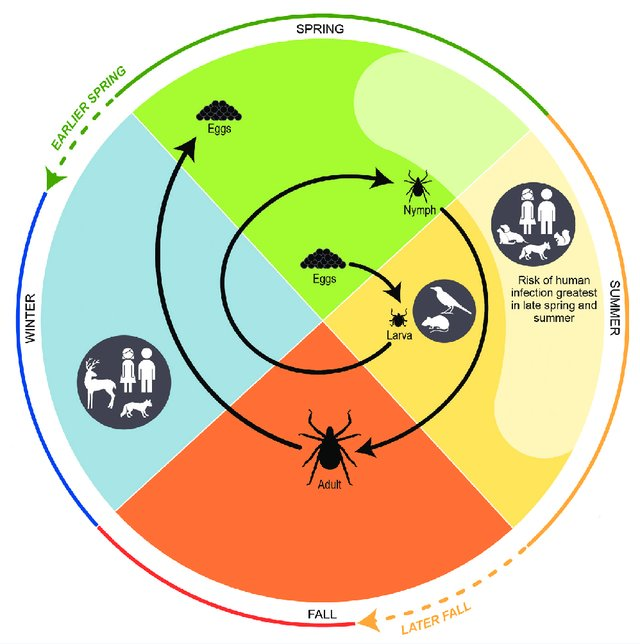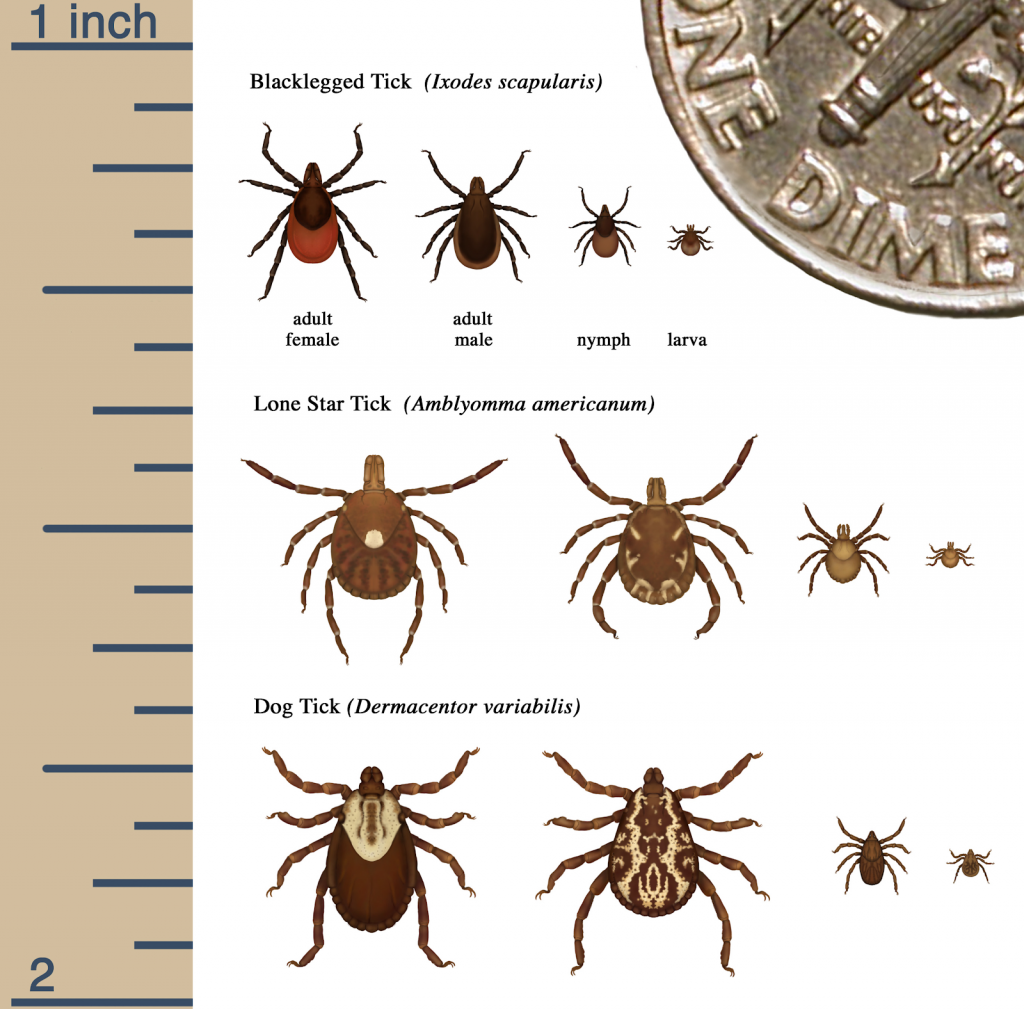Lyme disease is a zoonotic disease, which means that it infects both people and animals. Lyme disease is caused by the bacteria Borrelia burgdorferi. In the Northeast, this bacteria is transmitted most commonly by the blacklegged tick (Ixodes scapularis). Identifying ticks and understanding their lifecycle can help to reduce the risk of Lyme disease in yourself and your pet. The blacklegged tick life cycle is two years long and consists of three life stages (larva, nymph, and adult). Each life stage feeds on a host before progressing to the next stage (or laying eggs for the adult female). Nymphs and adult females are most commonly found on people. In the Northeast, the risk of being bit by a blacklegged tick is highest in the spring, summer and fall. However, adults may be searching for a host in the winter when temperatures are above freezing. 1

Blacklegged ticks are not the only tick species in Massachusetts. Dog ticks and lone star ticks also bite people and their pets and can transmit a variety of diseases in both. The CDC’s tick identification chart can help to identify ticks you find on yourself or your pet. Black-legged tick adult females and nymphs have a characteristic black oval, also known as a scutum/shield, on their back. Adult female dog ticks are easily differentiated from blacklegged ticks by a white scutum/shield on their back. Adult female lone star ticks can be identified by the white dot or “lone star” on their backs, while nymphs are uniformly brown across their backs.

Bullet Points/Main Takeaways
- Lyme disease is spread by the blacklegged tick, commonly found in the Northeast
- Adult female and nymph blacklegged ticks are the most likely to bite people
- The risk of being bit by a blacklegged tick is highest in the spring, summer and fall
- Dog ticks and lone star ticks are also found in Massachusetts
- Tick identification can help understand disease risk in you and your pet
Links for More Information
For more information on how to IDENTIFY ticks: https://tickencounter.org/tick_identification/tickid_nonflash
For more information on TICKBORNE DISEASES in the Northeast: https://www.cdc.gov/ticks/tickbornediseases/tickID.html
TICKOLOGY PROJECT – Barnstable County: https://www.youtube.com/playlist?list=PLnyke5qp-yax0gwypEmge_-hFAI1lwAEd